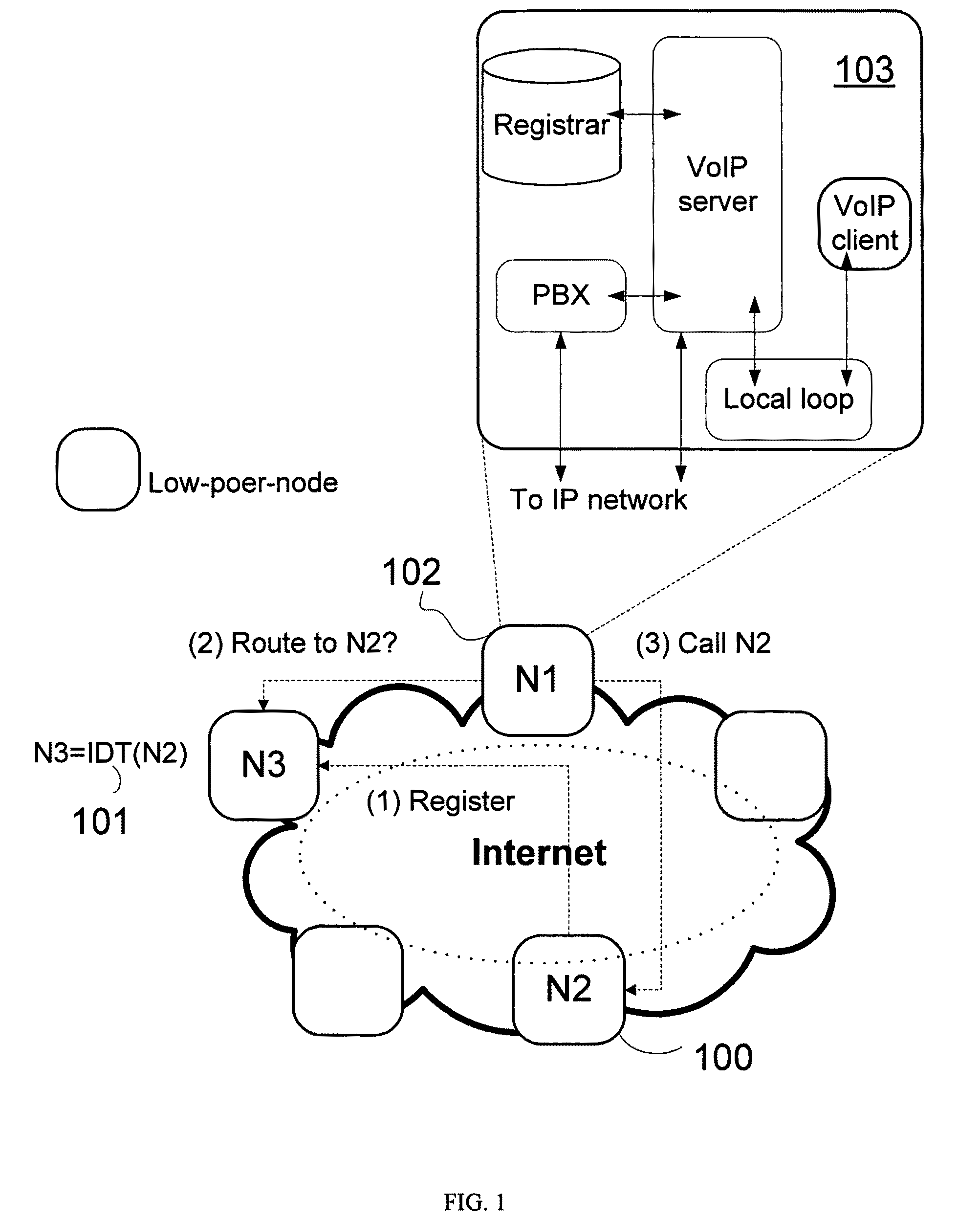Decentralized signaling for distributed systems
a distributed system and decentralized technology, applied in the direction of multi-digital computer combinations, electrical devices, transmission, etc., can solve the problems of users incurred the main usage cost of p2p-based voip calls, still suffer from a centralized control plane, and peers are often volatil
- Summary
- Abstract
- Description
- Claims
- Application Information
AI Technical Summary
Problems solved by technology
Method used
Image
Examples
Embodiment Construction
[0053]In a distributed computing paradigm, information is stored across different locations. To obtain information that is not locally available is, therefore, a crucial and necessary step. The registration process is a mechanism whereby a specific entity makes itself known to relevant nodes in a distributed system. The connection setup process is a mechanism whereby two or more nodes establish an application-level connection. The distributed system is assumed to be IP-based; therefore, each node is equipped with an IP routing table. A decentralized distributed system will be referred to as a flat distributed system.
[0054]While the utility of the present invention is suitable for all flat distributed systems, it is also possible that a flat distributed system is a component of a larger system with a non-flat (centralized) infrastructure. The noted difference between flat and non-flat systems is that in a non-flat system, there are bottleneck nodes that a large number of nodes must c...
PUM
 Login to View More
Login to View More Abstract
Description
Claims
Application Information
 Login to View More
Login to View More - R&D
- Intellectual Property
- Life Sciences
- Materials
- Tech Scout
- Unparalleled Data Quality
- Higher Quality Content
- 60% Fewer Hallucinations
Browse by: Latest US Patents, China's latest patents, Technical Efficacy Thesaurus, Application Domain, Technology Topic, Popular Technical Reports.
© 2025 PatSnap. All rights reserved.Legal|Privacy policy|Modern Slavery Act Transparency Statement|Sitemap|About US| Contact US: help@patsnap.com



